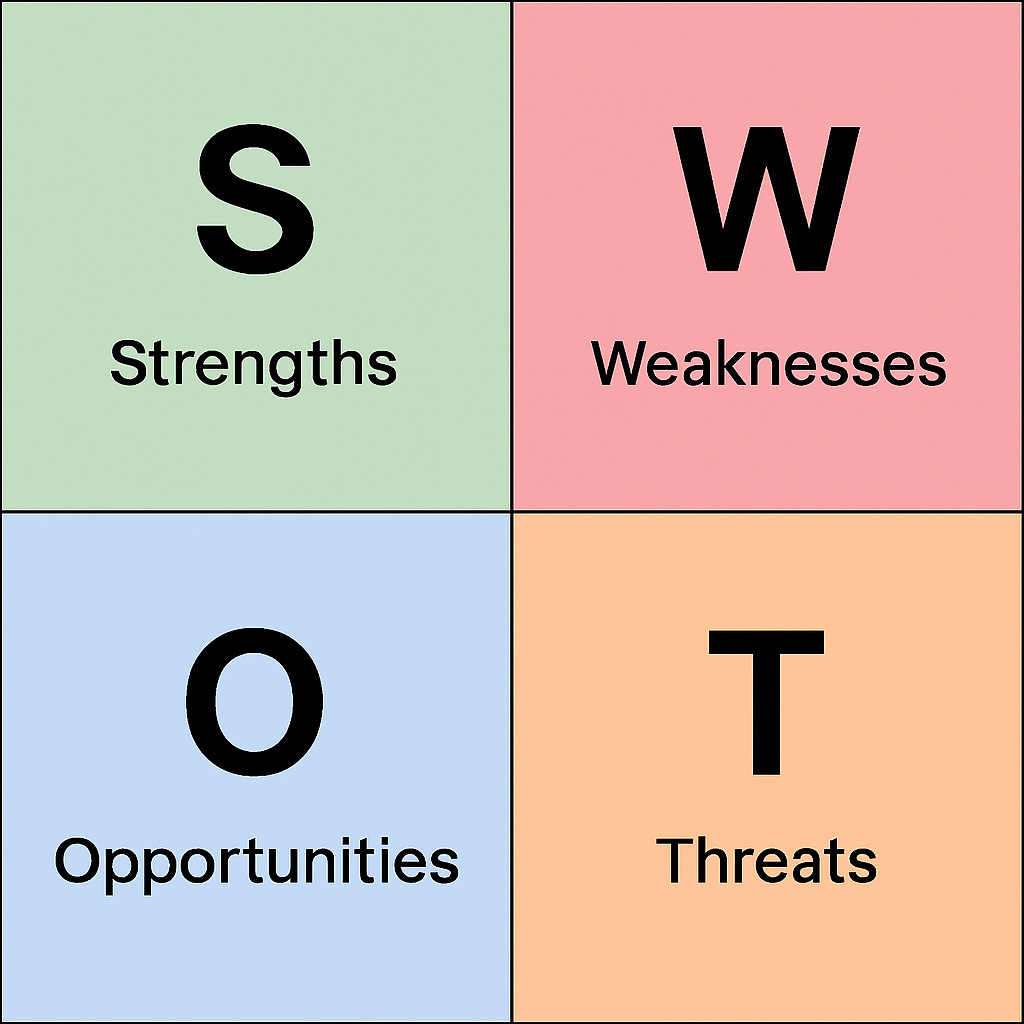Frameworks
Handrails for thinking
I love frameworks and have written about them many times regarding decision making, generative AI, contrafreeloading, and many others. The reason is in the word itself. Frameworks provide a scaffolding or frame with which I can hang ideas and thus better understand concepts. I remember in my first algebra class learning about the concept of simplifying the problem. The idea is to take a complex equation such as 3(2x+4)−2(x+5)=4(2x+1)−6 where you are solving for x and simplifying it by conducting simple mathematical operations e.g. addition and multiplication, until you get something like 4x+2=8x−2 that is much easier to solve.
This concept of simplifying complexity through frameworks can broadly be described as handrails for thinking. Such handrails appear in nearly every domain, guiding us through uncertainty, ambiguity, and complexity. The authors of this article in the Journal of Fashion Marketing and Management, state that, “The identification of sensory touch points in small fashion boutiques helps owner-managers to understand female shoppers and provides a handrail for thinking up new ways of improving shopping experiences.” The authors of this paper argue that the game of chess, “...provides at the very least a handrail for thinking clearly under pressure.” From sensory touch points to games of chess, many things can be frameworks or handrails for thinking to help us better understand and navigate our worlds.
The metaphor of handrails for thinking is appealing precisely because of its inherent simplicity and practicality. Picture climbing a staircase: each step upward may present potential uncertainty or even a slight risk, yet the presence of a sturdy handrail offers comfort, stability, and confidence. Frameworks act in a similar way for our minds. When facing complex problems, unfamiliar territory, or challenging decisions, frameworks provide the guidance and support needed to progress confidently, reducing the fear of making a misstep or becoming overwhelmed.
Human beings instinctively gravitate toward structure. Consider the everyday scenario of following a recipe. Cooking can involve complex processes, multiple ingredients, and delicate timing, an overwhelming combination for novice cooks. Yet, the existence of a recipe transforms this daunting endeavor into a manageable task. Similarly, maps and navigation systems serve as indispensable handrails when exploring new terrain. Without these tools, anxiety and confusion can easily overshadow the excitement of discovery. With them, travelers confidently navigate new cities, trails, or even unfamiliar transit systems.
Beyond practical guidance, frameworks serve a crucial psychological function. They reduce cognitive load by breaking complex concepts into manageable components. With less mental effort required to manage basics, we can allocate more mental energy to innovation, problem-solving, and creativity. A pilot, for example, uses detailed checklists, frameworks in their simplest form, to ensure safety and free cognitive bandwidth to focus on unforeseen complications. Likewise, professionals in virtually every industry rely on structured thinking techniques to minimize mistakes and enhance productivity.
At their core, frameworks, and thus handrails, help us navigate uncertainty. They do not remove challenges or guarantee success, but they offer clear and structured paths through complexity. Whether the context is business, education, personal growth, or daily tasks, frameworks consistently serve as reassuring guides. Like a reliable handrail, they support us as we move forward into the unknown, empowering us to embrace complexity rather than shy away from it.
Frameworks are not just convenient metaphors; they are rooted deeply in cognitive science. One particularly relevant theory is Cognitive Load Theory (CLT) that describes how our working memory, the part of our brain responsible for immediate conscious processing, has limited capacity. Think of working memory as a mental workspace, capable of handling only a few pieces of information simultaneously. When overloaded, our cognitive performance quickly deteriorates, resulting in confusion, mistakes, and frustration.
Frameworks serve to significantly reduce cognitive load by streamlining mental processes. By providing clear patterns or structures, they help us organize and group information, freeing cognitive resources for more sophisticated or creative tasks. For example, consider the simple mnemonic "ROYGBIV," a widely taught framework for recalling the order of colors in a rainbow. Without this mnemonic, remembering the precise sequence of colors might require considerable effort. With it, the task becomes trivial, dramatically lowering cognitive load.
Empirical research strongly supports the effectiveness of frameworks in improving decision-making and problem-solving. In studies on educational outcomes, Sweller and his colleagues found that structured frameworks, such as worked examples or step-by-step problem-solving templates, substantially improved students' learning and retention compared to unstructured problem-solving. Frameworks essentially simplify the mental task, making it easier to acquire, process, and retrieve information from memory.
Moreover, frameworks help combat cognitive biases, systematic errors in thinking that result from reliance on mental shortcuts. Decision-making frameworks like SWOT (Strengths, Weaknesses, Opportunities, Threats) or MECE (Mutually Exclusive, Collectively Exhaustive) provide explicit checks and balances that mitigate biases such as confirmation bias, anchoring, and overconfidence. Because these frameworks force deliberate evaluation of multiple perspectives or categories, they facilitate more balanced, objective decision-making.
Frameworks do more than just organize thinking; they fundamentally improve how the mind functions under stress or uncertainty. They offer scaffolding that makes complex situations manageable, protecting cognitive resources from becoming overwhelmed. In other words, frameworks keep our cognitive workspace clear and uncluttered, allowing us to leverage our mental capacity for deeper, more insightful thought.
Frameworks, the mental handrails we use to guide our thinking, are highly practical tools applied in diverse areas of life, business, and personal growth. From strategic decision-making in corporations to guiding innovative product development and mastering new personal skills, frameworks help us approach complexity systematically, thoughtfully, and effectively.
For instance, consider how Amazon’s Jeff Bezos famously introduced the "Regret Minimization Framework," asking himself whether he’d regret not pursuing a bold opportunity later in life. Such frameworks reduce anxiety by shifting attention from paralyzing short-term uncertainties to clearer long-term visions. Additionally, structured methods like the Eisenhower Matrix (urgent versus important tasks) allow professionals to prioritize effectively, cutting through ambiguity and decision fatigue.
In technology, frameworks guide product development and innovation by establishing clear processes and mental models. The Jobs-to-be-Done (JTBD) framework is especially popular for identifying customer motivations, helping product teams deliver exactly what users need rather than simply what they request. Similarly, agile methodologies use frameworks such as Scrum or Kanban to organize workflow and drive iterative improvements, providing teams with clear steps to manage complexity.
Another widely adopted framework, the Build-Measure-Learn loop introduced by Eric Ries in "The Lean Startup," encourages teams to approach product innovation scientifically. It systematically reduces risk and uncertainty by regularly testing assumptions through incremental experiments, creating reliable feedback loops that clarify the path forward. Here, the framework is literally a cognitive handrail guiding the product team through ambiguity toward validated learning and progress.
Frameworks also provide invaluable support for personal development, skill acquisition, and habit formation. Learning new skills becomes less daunting with approaches like the Feynman Technique, named after physicist Richard Feynman, where one teaches a concept in simple terms to identify and fill knowledge gaps. This structured approach rapidly deepens understanding, making complex ideas manageable and easier to internalize.
Habit formation similarly benefits from cognitive handrails. Frameworks such as James Clear’s "Four Laws of Behavior Change" – make it obvious, make it attractive, make it easy, make it satisfying – provide a practical structure for breaking bad habits and building beneficial routines. Frameworks like these don’t merely simplify the abstract; they empower individuals by turning ambiguous goals into structured actions, greatly increasing the likelihood of sustained progress.
Whether in strategic decisions, technological innovation, or personal growth, frameworks operate as essential handrails, grounding our thought processes, guiding us through ambiguity, and consistently transforming complexity into clarity.
While frameworks provide essential support, it is equally important to recognize their limitations. As helpful as handrails may be, overreliance can introduce rigidity, stifle creativity, or lead to oversimplification. For instance, if used inflexibly, a SWOT analysis might reinforce confirmation bias by allowing us to justify previously held beliefs instead of critically examining new possibilities. Similarly, strict adherence to predefined models might discourage experimentation, innovation, or intuitive insights.
The key, therefore, is to balance structured guidance with flexibility and adaptability. Great thinkers and successful leaders use frameworks as starting points, not absolute rules. They continually test their assumptions, question established patterns, and adjust their mental models when new information emerges. For example, a seasoned product manager might initially rely heavily on the Jobs-to-be-Done framework, but over time adapt it to better reflect unique user behaviors, industry conditions, or emerging trends. Frameworks become more powerful when they can be tailored, refined, or even rebuilt entirely as situations evolve.
Indeed, the ability to develop custom frameworks is itself a critical thinking skill. Constructing your own mental handrails involves three fundamental steps: observation, simplification, and iteration. First, closely observe successful patterns or practices within your environment, noticing how complexity is typically handled. Next, simplify these observations into clear, repeatable guidelines or processes. Finally, iterate and refine the framework through application, adjusting based on feedback and outcomes.
Consider how Netflix developed its own unique "North Star" framework, optimizing viewer hours watched, to guide product development. Through trial, error, and adaptation, they created a simplified yet highly effective strategic tool that reduced ambiguity and improved decision-making at scale. Similarly, individuals can craft personalized frameworks to guide their learning, career progression, or even daily habits, continually adapting them as needs and circumstances change.
Ultimately, the goal is not blind adherence, but thoughtful engagement with frameworks. By remaining open-minded, regularly revisiting our assumptions, and actively refining our mental handrails, we achieve the optimal balance: frameworks that guide without constraining, simplify without oversimplifying, and empower creative thinking without sacrificing structure.
Frameworks are more than tools; they are mental infrastructure. They stabilize our thinking, reduce the strain of uncertainty, and sharpen our ability to act with clarity. Like a reliable handrail beside a steep staircase, a well-designed framework doesn’t carry you up the steps, but it makes the climb steadier, more focused, and far less daunting. Across disciplines and decisions, from product strategy to personal growth, frameworks help us see patterns, reduce friction, and move forward with purpose.
But the most powerful frameworks are not merely adopted, they’re adapted, questioned, reworked, and sometimes entirely reinvented. The difference between rigid dogma and creative mastery lies in how we engage with these mental models. You don’t need to accept every framework as gospel. Instead, treat them as drafts. Use them, test them, and if necessary, break them. Then build something better in their place.
So here’s the call to action for you: pick a problem you’re wrestling with, something murky or complex, and reach for a handrail. Apply a familiar framework or create your own. Sketch it. Test it. See how it shapes your clarity. And then, next time you find yourself in unfamiliar terrain, don’t panic. Look for structure. Reach for a handrail. Build one if it doesn’t exist. The act of framing may be the most powerful thinking tool we have.




Excellent commentary is always. Couldn’t agree more. Here’s a master list I tend to look at regularly – there are some foundational categories that need to be embedded at the core of educational offerings: https://fs.blog/mental-models/